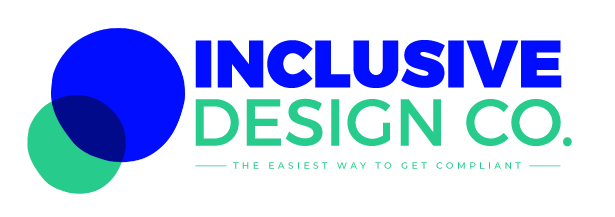
What is the ADA?
The Americans with Disabilities Act (ADA) prohibits discrimination against people with disabilities in all aspects of public life, including jobs, schools, and all public and private places that are open to the public. It is divided into 5 sections (or titles), each covering specific areas of public life. ADA Title III addresses compliance in the digital space. If you have a physical location, Title III requires you to have accessible parking spaces or a wheelchair ramp. In the digital space, being ADA compliant means that your website, mobile app, software, or other digital content is accessible to people with disabilities.
What is ADA Compliance?
In September 2010, the Department of Justice (DOJ) published the Americans with Disabilities Act (ADA) Standards for Accessible Design. These standards require that all electronic and information technology must be accessible to people with disabilities.
How Does a Company Comply with the ADA?
The ADA encourages self-regulation of accessibility standards and the Department of Justice is currently developing regulations to provide specific guidance to the entities covered by the ADA. Organizations are encouraged to use the WCAG 2.0 level AA guidelines as a guide on how to become accessible until the DOJ defines the regulations.
What is the WCAG?
The Web Content Accessibility Guidelines (WCAG) are a set of standards created by the World Wide Web Consortium (W3C).
WCAG
- The W3C is an international community that develops regulations and recommendations for the internet to help ensure The W3C is an international community that develops regulations and recommendations for the internet to help ensure its longevity and usability.
- The WCAG provides detailed guidelines for website owners, designers and developers to create The WCAG provides detailed guidelines for website owners, designers and developers to create websites and digital content using accessible approaches that work seamlessly with the assistive technologies used by people with disabilities.
- WCAG compliance is divided into three levels of success criteria:
- Level A Basic accesibility requirements
- Level AA Medium-scale accessibility requirements
- Level AAA High-volume accessibility requirements
- The WCAG 1.0 guidelines were published in 1999, updated in 2008 (WCAG 2.0) and, most recently updated again in 2018 The WCAG 1.0 guidelines were published in 1999, updated in 2008 (WCAG 2.0) and, most recently updated again in 2018 (WCAG 2.1). As the internet evolves so quickly, the guidelines are reviewed and revised continually.
- Each update endeavors to include the most recent technological advancements and more comprehensive guidelines.
- WCAG 3.0 is scheduled for release in 2021 and is expected to be a much more inclusive set of guidelines that WCAG 3.0 is scheduled for release in 2021 and is expected to be a much more inclusive set of guidelines that will be easier to understand and implement.
What is EAA/EN 301549?
The European Accessibility Act (EAA) is legislation that was passed by the European Union in April 2019 and requires accessibility for digital products and services. It applies to all industries.
EAA/EN 301549
- EN 301549 is a policy produced by the European Telecommunicatios Standards Institute (ETSI), which is the E.U agency EN 301549 is a policy produced by the European Telecommunicatios Standards Institute (ETSI), which is the E.U agency that regulates the digital space.
- EN 301549 is based on WCAG 2.1 and defines official standards for web accessibility.
- The EAA gives private companies 5 years to comply with its requirements, until June 28, 2025.
Law
Inclusive Design Co. offers businesses of all sizes a simple and affordable way to open their websites to everyone.
Website compliance is highly complex process; we make it easy for you and handle everything. Contact us today and start on the path to ADA compliance and website accessibility.

